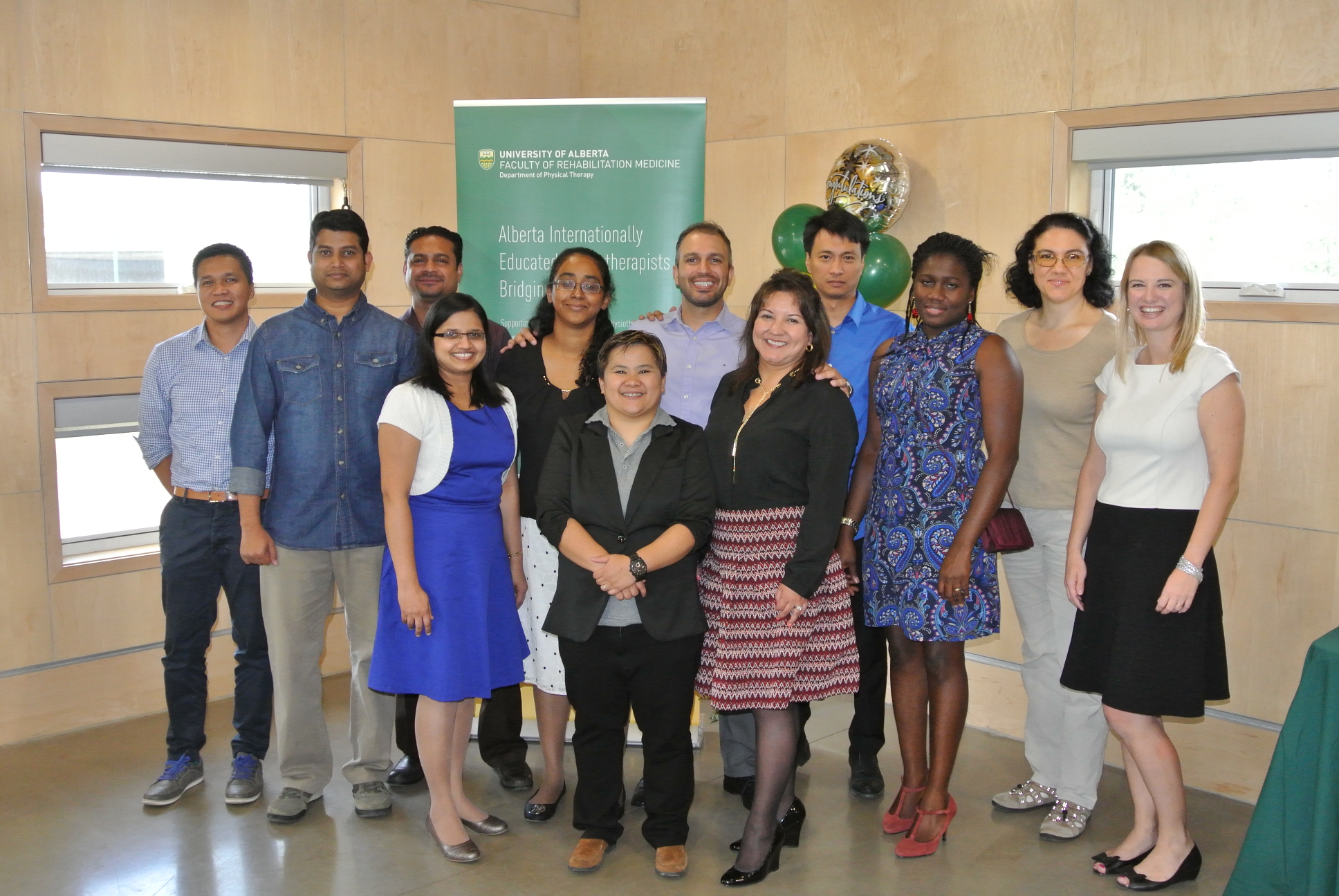
AIEPB program cohort 2 graduates
(Edmonton) When Priya Thayalan learned about how the Alberta Internationally Educated Physiotherapists Bridging (AIEPB) program benefited her colleague's wife, she decided to explore the possibility of moving to Canada.
At the time, it never occurred to her that she'd move her family halfway across the world for a new opportunity since she was already working as an assistant professor in India.
Her friend twice failed the Canadian licensing exam-a requirement to practise as a physical therapist in this country-before passing on the third try with help from the AIEPB program, a joint initiative of the Department of Physical Therapy at the University of Alberta and the Physiotherapy Alberta College + Association.
When Thayalan heard about her friend's success, she did not hesitate to apply.
"It was essentially an overnight decision," she says. "Moving to Canada was not something I had considered but after her experience, I thought it was worth investing in and started my visa application."
Thayalan didn't have high expectations and took the process day-by-day. Though moving to Canada would give her more options to practise and earn more money, she wasn't sure if she'd be eligible. But after being approved for a visa, Thayalan submitted her application to the program, passed the competency assessment, and was accepted.
"The program didn't necessarily teach me anything new. Instead, it taught me new ways to approach physiotherapy that I hadn't been exposed to before," explains Thayalan. "Using critical thinking during practise was really encouraged, something that's not the norm in India. I feel that the program has really fine-tuned my skills as a physiotherapist."
Practising physiotherapy in Canada involves a level of compassion and respect towards the patients that isn't apparent in some places in the world. For example, when a patient goes into a clinic for an elbow injury and performs an exercise meant for the elbow, a physiotherapist in India would likely disregard any pain or discomfort the patient may feel, and continue with the exercise. However in Canada, a physiotherapist would stop the patient from continuing the exercise so they can determine what is causing the discomfort by asking the patient for more information or consulting other professionals.
"Many of our students are from countries like the Philippines and India where physiotherapists do not practice autonomously," explains Colleen Britton, co-director of the AIEPB program. "The program teaches students skills like clinical reasoning, critical thinking, and how to practise autonomously."
The mentorship and clinical placement components of the bridging program introduce the students to the practice of physiotherapy in Canada as well as allow the students to develop a professional network. Many students also get a confidence boost after completing the program because they now have the knowledge to work in the cultural context of healthcare in Canada.
"Priya was a very engaged student. She had a good support system and had great confidence in her skills," says Britton.
Just before completing the bridging program, Thayalan wrote the national exam and passed prior to her graduation. She now practises at two clinics and is looking to accept another position.
"I can thank the AIEPB program for helping me look at physiotherapy in a whole new perspective resulting in my success," says Thayalan. "It feels good calling Canada my home."